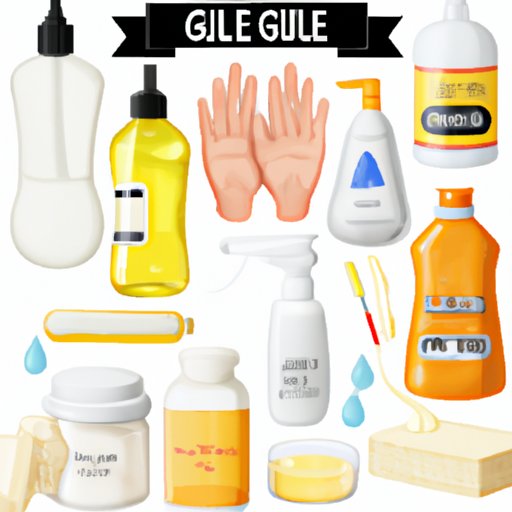
Introduction
Getting super glue stuck on your skin can be frustrating and painful. The powerful adhesive quickly bonds to your hands, making it difficult to remove. Fortunately, there are several effective and natural methods to get super glue off your hands. The purpose of this article is to provide step-by-step instructions for using these natural remedies to remove super glue from your hands safely and efficiently.
Use Acetone
Acetone is a powerful solvent that can dissolve super glue. To use acetone to remove super glue from your hands, follow these steps:
- Apply a small amount of pure acetone to a clean cotton ball or cloth.
- Gently rub the affected area with the acetone-soaked cotton ball or cloth until the super glue starts to dissolve.
- Wash your hands with soap and water to remove any remaining acetone and super glue residue.
Note that acetone can dry out your skin and cause irritation, so use it sparingly and avoid contact with your eyes and mouth. If you have sensitive skin, consider using one of the other methods described below.
Use Olive Oil
Olive oil is a natural and gentle way to dissolve super glue and make it easier to remove. Here’s how to use olive oil to remove super glue from your hands:
- Apply a generous amount of olive oil to the affected area.
- Gently massage the oil into your skin for a few minutes to help dissolve the super glue.
- Wash your hands with soap and warm water to remove any remaining olive oil and super glue residue.
Be aware that olive oil can be messy and may leave an oily residue on your skin, so you may need to wash your hands several times to remove all traces of the oil.
Use Warm Soapy Water
Warm soapy water can help loosen super glue and make it easier to remove from your hands. Here’s how to use warm soapy water to remove super glue:
- Fill a bowl or sink with warm water and add a few drops of liquid soap.
- Soak your hands in the warm, soapy water for 5-10 minutes.
- Gently massage the affected area to help loosen the super glue.
- Rinse your hands thoroughly with warm water and dry them with a towel.
Be sure to use warm, not hot, water to avoid burning your skin.
Use Baking Soda
Baking soda can help break down super glue and make it easier to remove. Here’s how to use baking soda to remove super glue from your hands:
- Mix equal parts baking soda and water to form a paste.
- Apply the paste to the affected area and gently massage it into your skin for a few minutes.
- Rinse your hands with warm water and dry them with a towel.
Be aware that the abrasive texture of baking soda can irritate sensitive skin, so use this method with caution.
Use Vinegar
Vinegar’s acidity can dissolve super glue and make it easier to remove. Here’s how to use vinegar to remove super glue from your hands:
- Soak a clean cotton ball or cloth in white vinegar.
- Apply the vinegar-soaked cotton ball or cloth to the affected area for a few minutes.
- Gently massage the area to help dissolve the super glue.
- Rinse your hands with warm water and dry them with a towel.
Vinegar has a strong odor and can cause skin irritation, so be sure to use it in a well-ventilated area and avoid prolonged contact with your skin.
Use Hand Lotion
Hand lotion can moisturize your skin and help loosen super glue. Here’s how to use hand lotion to remove super glue:
- Apply a generous amount of hand lotion to the affected area.
- Massage the lotion into your skin for a few minutes to help loosen the super glue.
- Wipe your hands with a clean cloth to remove any remaining super glue residue.
Giving the lotion enough time to work is key to this method’s success. Be patient and wait for the glue to soften before trying to remove it.
Conclusion
Super glue can be challenging to remove from your hands, but with these natural and effective methods, you can get rid of it safely and efficiently. Remember to use caution when handling acetone, baking soda, and vinegar, as they can irritate your skin and eyes. If you have sensitive skin, consider using olive oil or hand lotion instead. And finally, try to prevent super glue from getting on your hands in the first place by wearing gloves or using a barrier cream when working with adhesives.




